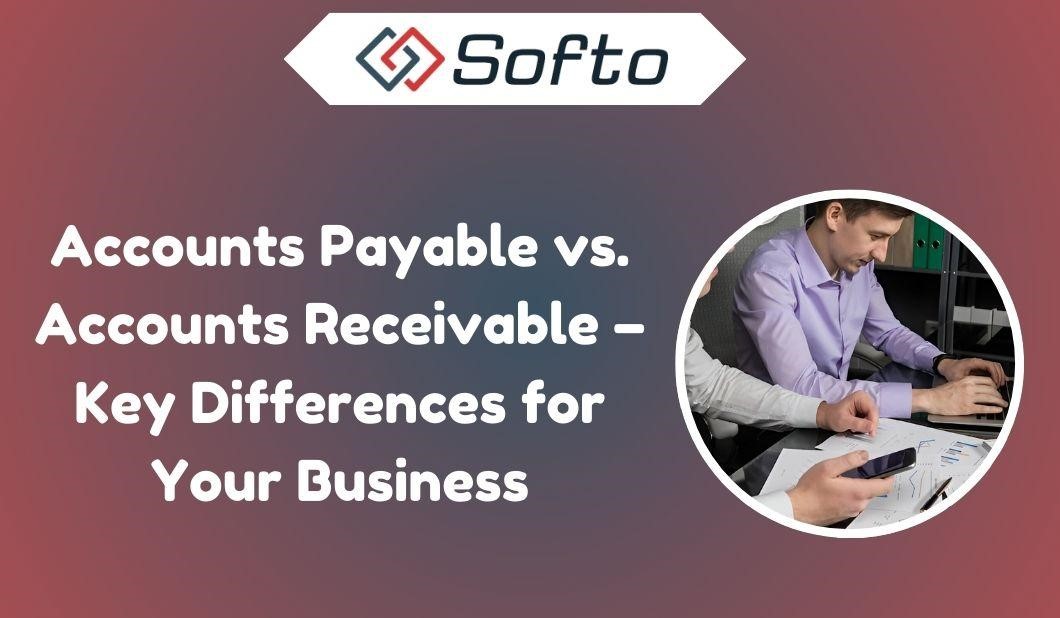
Grasping the distinction between accounts payable (AP) and accounts receivable (AR) is critical to your business’s fiscal well-being. The two processes are opposite ends of your company’s cash flow—what you owe and what you’re owed.
Get in touch – we are Inkle, and we make finance easier for early-stage startups. We help you with everything from closing your books to filing taxes, to getting and staying compliant, so you can concentrate on growing your business (and not going bankrupt). In this guide, we’ll break things down between AP and AR so that you can make better financial decisions, and maintain positive cash flow.
What is Accounts Payable (AP)?
Accounts Payable is the amount you owe to your suppliers, vendors, or service providers for goods or services already received or the services rendered but have not yet been paid for. In layman’s terms, it’s a credit transaction where you have to make short-term payments to your business over a specific period, typically taking 30 to 90 days for repayment.
Key Features of Accounts Payable:
- Liability on the Balance Sheet: Accounts payable is recorded as a liability because it represents money your business owes.
- Short-Term Obligation: The majority of AP is expected to settle during normal credit terms offered by vendors.
- Examples: Unpaid invoices for office supplies, raw materials, utility bills, or professional services.
How AP Works:
- Your vendor provides you with an invoice for goods or services.
- You inspect and validate the invoice.
- The payment is scheduled based on the agreed-upon terms.
Why Managing AP is Important:
Proper management of accounts payable ensures you avoid late fees, maintain strong relationships with vendors, and optimize cash outflows to keep your business running smoothly.
What is Accounts Receivable (AR)?
Accounts Receivable is the money owed to your business by customers or clients for goods or services that you’ve already delivered but haven’t been paid for yet. In this case, your business acts as the creditor.
Key Features of Accounts Receivable:
- Asset on the Balance Sheet: Accounts receivable is classified as an asset because it represents incoming cash.
- Short-Term Asset: AR payments are typically collected within 30 to 60 days, depending on the terms you’ve provided to your customers.
- Examples: This includes invoices sent to customers for products sold on credit, subscription fees, or services rendered.
How AR Works:
- You deliver goods or services to your client.
- You issue an invoice with payment terms.
- The customer settles the invoice within the agreed timeframe.
Why Managing AR is Important:
Efficient AR management ensures timely cash inflows, reduces the risk of bad debts, and supports your business’s ability to meet its financial obligations.
Key Differences Between Accounts Payable and Accounts Receivable
The following table highlights the core differences between AP and AR:
Aspect | Accounts Payable (AP) | Accounts Receivable (AR) |
Definition | Money your business owes to vendors or suppliers. | Money owed to your business by customers or clients. |
Type | Liability | Asset |
Balance Sheet Impact | Recorded as a liability. | Recorded as an asset. |
Cash Flow Impact | Outflows of cash for settling debts. | Inflows of cash from customer payments. |
Examples | Vendor invoices, utility bills, office supplies. | Client invoices, subscription fees, services rendered. |
Goal | Efficient payment management to avoid penalties. | Prompt collection of payments to maintain cash flow. |
How AP and AR Work Together in Business Operations
Accounts receivable and payable are two sides of a coin, and yet they are very essential in dealing with a company’s cash flow. Among them are some of the relationships that exist between these two:
- Vendor Payment and Customer Payment: Your vendor payments (AP) must match the payments you receive from your customers (AR) to make sure that liquidity is positive.
- Relations with Suppliers: Your relations with suppliers (AP) can be affected by the credit terms you allow customers (AR).
- Management of Capital: A business needs to manage the working capital by ensuring that AP and AR balances are in an appropriate ratio.
This can be illustrated using a cash flow example, where cash flow shortfalls tend to affect supplier payments, because customers do not pay their bills on time. We assist and offer advice to startups at Inkle, to help navigate these situations properly.
Why Efficient Management of AP and AR is Crucial
The Importance of Managing AP:
- Avoids late payment penalties and maintains vendor trust.
- Optimizes your cash outflows, ensuring liquidity.
- Helps you build strong relationships with suppliers, which may lead to better credit terms.
The Importance of Managing AR:
- Ensures timely cash inflows to fund operations and growth.
- Reduces the risk of bad debts and uncollected payments.
- Improves revenue forecasting and financial planning.
By maintaining a balance between AP and AR, your business can stay financially stable and avoid the pitfalls of poor cash flow management.
Tools and Strategies for Managing AP and AR
Effectively managing accounts payable and accounts receivable requires the right tools and practices. Here’s how you can streamline these processes:
Tools for AP Management:
- Accounting Software: Automation tools like those offered by QuickBooks or Xero can simplify invoice tracking, invoice approvals, and payment scheduling.
- Vendor Portals: Online systems to manage vendor information and payment records
Tools for AR Management:
- Invoicing Software: Use FreshBooks or Zoho Invoice to easily create and send invoices and track payments.
- Accounts Receivable Financing: Factoring and other solutions can help you get paid upfront and in cash from outstanding invoices.
Best Practices:
Regular Reconciliation: Regularly reconcile AP and AR accounts to maintain accuracy and prevent any mismatches.
Establish Clear Terms: Establish payment terms for customers and vendors alike to keep confusion at a minimum.
Automate Where Possible: Chain software up to optimize productivity.
At Inkle, we know that the right tools and strategies can save startups both time and effort in handling finances.
Final Thoughts
The differences between accounts payable and accounts receivable are essential for maintaining a healthy cash flow, and also to ensure your business runs smoothly. As AP manages outgoing payments to suppliers, AR handles incoming payments to ensure they are received on time. Both are essential for sound financial leadership and long-term sustainability.
Managing finances as a startup can be overwhelming, but it shouldn’t be. At Inkle, we think the tools and services that enable you to close your books, file taxes, and stay compliant should not mean requiring your company to break the bank—your company deserves your help from the first million you make! We realize you may have many other things to juggle, so we can take the anxiety away from dealing with AP, and AR the whole nine yards!


